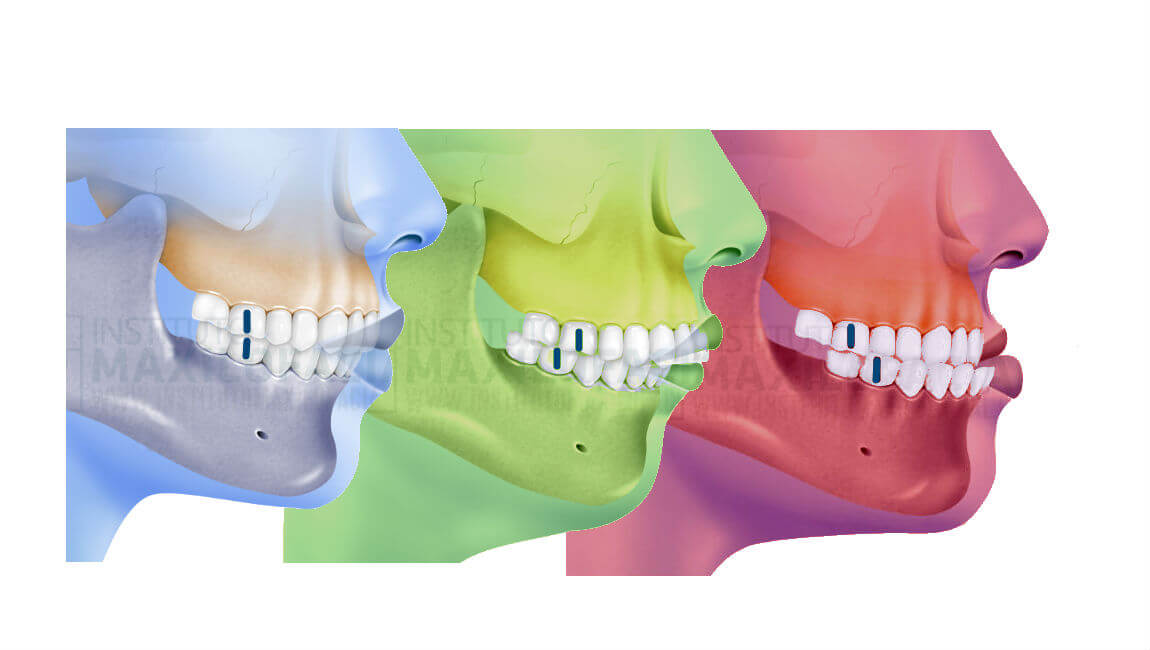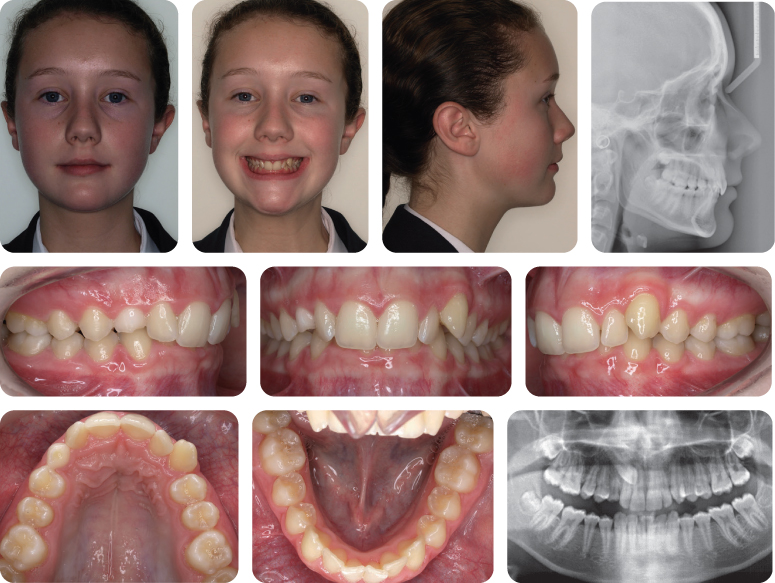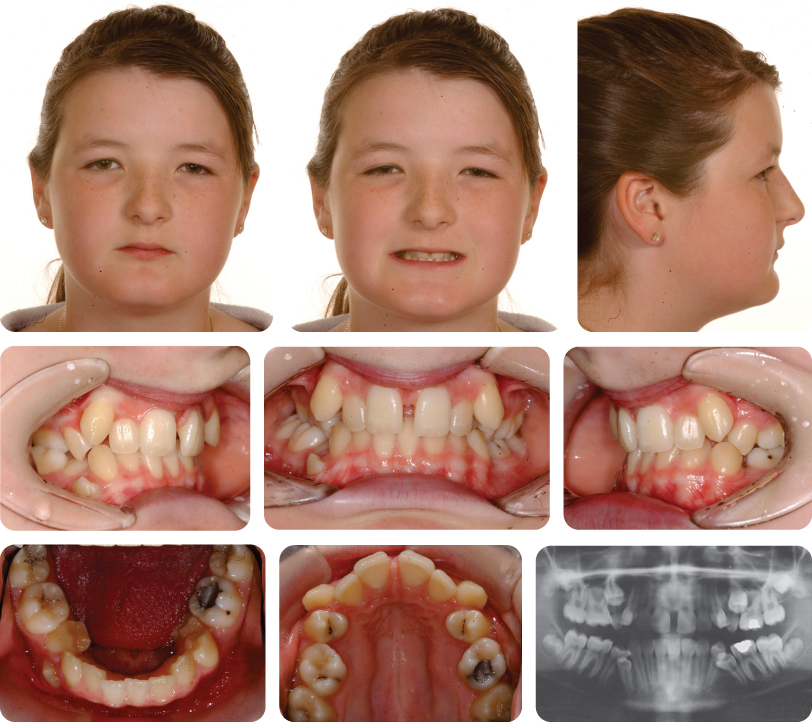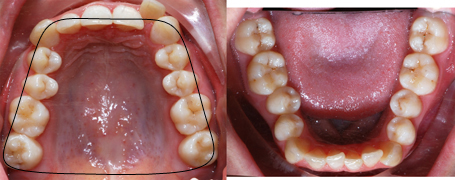class ii division 2 subdivision
The shop in question has a very large dust collection system. Where automated spray application equipment is used the area outside the access doors shall be unclassified provided the door interlock.

What Is A Class I Class Ii Or Class Iii Bite Instituto Maxilofacial
However it was also explained that Class II Division 2 subdivision left and anterior deep overbite are contributing factors to increase the pain and discomfort in TMJs.

. The discrepancy between the upper and lower teeth does not match the discrepancy between the upper and lower teeth where the molars and canines are located red and blue arrows. Class II locations are those that are hazardous because of the presence of combustible dust. A Class II Division 1.
2 In Proffits latest text p. NEC 5002 defines dustight as enclosures constructed so that dust will not enter under specified test. Class II Division 2.
This case was presented to the Brazilian Board of Orthodontics and Dentofacial Orthopedics BBO as part of the requirements to obtain the title of BBO Diplomate. Patients with Class II subdivision malocclusions have long been a treatment challenge for clinicians1 2 Treating asymmetric malocclusions is inherently more difficult than treating symmetric malocclusions since symmetry in 1 arch or both arches must be reestablished usually with asymmetric extractions mechanics or surgery. Codemaster Electrical OP 29 May 03 1500.
Only show this user. Malocclusion Angle class II subdivision 710782002 Definition A distal placement of the mandibular molar a mesial relationship of the maxillary or a combination of the two. Class II locations are divided into three groups EFG.
Joined Nov 22 2013. Skeletal Class II division 2 Mandibular deficiency Class II div 2 with a small mandible the decreased size is localized more to the mandibular body Mandibular Ramus is of normal lenght Cephalometrically. The ignition temperature of the dust the electrical conductivity of the dust and the thermal blanketing effect the dust can have on heat-producing equipment such as lighting fixtures and motors.
Two-hundred fourteen subjects were classified as Class II1 with 49214 229 having a subdivision malocclusion. Studying the Prevalence and Etiology of Class II Subdivision Sep 30 2016. The molar relationships are like that of Class II and the maxillary anterior teeth are protruded.
Class II subdivision malocclusions were grouped into 3 main categories. Class II division 2. Teeth are proclaimed and a large overjet is present.
For the Class II Division 2 subdivision group included. There is some discussion and argument for the reverse opinion. Class II Division 2.
Class II Div II receps in cabinet shops. Note that the dust must be present in. The percentage of Division 1 and 2 malocclusions as well as the percentage of Class II1 and Class II2 presenting with a subdivision malocclusion was calculated.
Or Zone 22 locations whichever is applicable as shown in Figure 5165 D 4. Class I Zone 2. We have experience in large turnkey solutions for Class 1 Division 2 and ATEX Zone 2 environment projects be sure to give us a call 44 0 1785 879 050 UK or 1 864 421 6991 US to discuss yours.
188 7 he indicates that the subdivision side is the malocclusion. Interesting trends were noted with regard to treatment strategies midline and molar corrections and mandibular incisor proclination. The class II division 2 differs from division 1 by the following characteristic.
The present case report describes the treatment of an adult patient with Angle Class II Division 2 subdivision left malocclusion associated with anterior deep overbite and TMD. Class II Division 2 Enclosures. Class II location groups are determined by.
Per the National Electrical Code NEC there are 3 classifications for areas that are defined as hazardous. The largest category was mandibular asymmetry. Ive been reading a lot on article 502-115 502-145 and speaking to the local authorities on the requirement for receptacles around wood working equipment.
They are Class I gases vapors Class II flammable dusts Class III fibers the focus of todays Blog is on Class II locations. If they are installed in a location with hazardous metal dust magnesium etc the enclosure must be identified for this specific type of. Class II Division 2 subdivision left normal overjet an- terior deep overbite with a deep mandibular curve of Spee and extruded mandibular incisors and canines.
The area within 915 mm 3 ft of any opening shall be classified as Class I Division 2. In most patients with Class II subdivision malocclusion the maxillary dental midline is. Class II division 2.
NEC 5024 B 4 requires all boxes and fittings to be dusttight. Significant members of the faculty support this contention. However it was also explained that Class II Division 2 subdivision left and anterior deep overbite are contributing factors to increase the pain and discomfort in TMJs.
The upper incisors are tipped backward and hide the fact that. Class II Division 2 subdivision left malocclusion associated with anterior deep overbite in an adult patient with temporomandibular disorder. Subdivision malocclusions in Class II1 and Class II2 patients and to see if the.
The enclosures must be dust-ignition-proof identified for a Class II location. With these clarifications the patient decided to undergo orthodontic treatment to improve his dental occlusion and affirmed that he was fully aware that orthodontic treatment could have no. The orthodontic treatment of patients with chief complaint of temporomandibular disorders TMD presents doubtful prognosis due to the poor correlation between malocclusions and TMDs.
Class II Division 1. 1 Flat mandibular plane 2 Increasesd posterior facial height 3 Short lower anterior facial height resulting in both upper and lower lip having a more everted. With these clarifications the patient decided to undergo orthodontic treatment to improve his dental occlusion and affirmed that he was fully aware that orthodontic treatment could have no effect in his clicking and.
1 Survey of the faculty. Prologue Patients with Class II subdivision malocclusions have Class I characteristics on one side and Class II characteristics on the other primarily because of the distal positioning of the mandibular first molar in relation to the maxillary first molar on the Class II side. 5 Nov 22 2013.
Control Transformers and Resistors. The word subdivision refers to the Class II side. The maxillary lateral incisor teeth may be proclaimed or normally inclined.
We offer a comprehensive solution service which includes extrusion design manufacture software programming and project management support. The molar relationships are Class II where the maxillary central incisors are retroclined.

Scielo Brasil Class Ii Division 2 Subdivision Left Malocclusion Associated With Anterior Deep Overbite In An Adult Patient With Temporomandibular Disorder Class Ii Division 2 Subdivision Left Malocclusion Associated With

5 Class Ii Division 2 Malocclusion Pocket Dentistry

5 Class Ii Division 2 Malocclusion Pocket Dentistry

Class Ii Division 2 An Introduction To Orthodontics 2nd Edition
Class Ii Division 2 Subdivision Left Malocclusion Anterior Deep Bite And Tmd

Class Ii Division 2 An Introduction To Orthodontics 2nd Edition

Class Ii Division 2 Dr Sylvain Chamberland Orthodontiste

Class Ii Division 2 Dr Sylvain Chamberland Orthodontiste

Class Ii Division 2 Dr Sylvain Chamberland Orthodontiste

Pdf Class Ii Division 2 Subdivision Left Malocclusion Associated With Anterior Deep Overbite In An Adult Patient With Temporomandibular Disorder Semantic Scholar

5 Class Ii Division 2 Malocclusion Pocket Dentistry

Large Preview Of 3d Model Of Geodesic Catalog Class Ii Geodesic Geodesic Dome Polyhedron

Class Ii Correction Extraction Or Nonextraction American Journal Of Orthodontics And Dentofacial Orthopedics

5 Class Ii Division 2 Malocclusion Pocket Dentistry

Class Ii Division 2 An Introduction To Orthodontics 2nd Edition

978 620 2 79766 5 In 2021 Orthodontics Dental Health Dentistry
